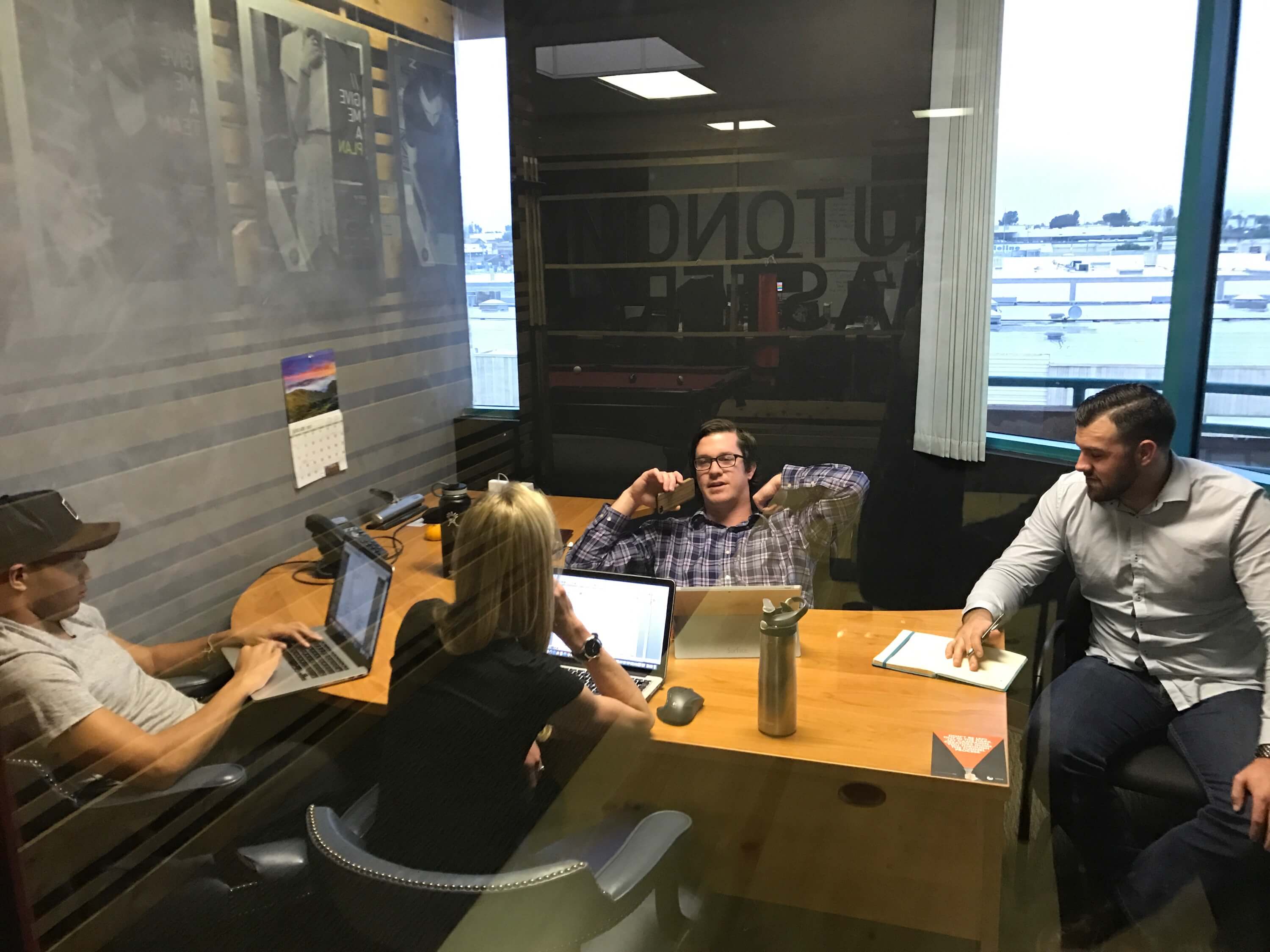What We're Talking About...Is Influencer Marketing Dead?
'Influencer Marketing' was all the rage as companies looked towards 2017 and it seemed everyone was trying to figure out to add it to their marketing...
I know what I am looking for, and would like to chat.
A team of data-driven marketers obsessed with generating revenue for our clients.
Because the proof is in the pudding.
At Campaign Creators we live by three principles: Autonomy, Mastery, Purpose.

One of the founders of our company recently showed me a website that I’d never heard of before. The  company, Help A Reporter Out (HARO for short), helps connect industry influencers with different relevant media outlets. Our company head had come across a request for articles regarding sales and marketing by sales professionals for a well-known magazine, and seeing that I might have the proper knowledge and experience, encouraged me to submit. Though my article wasn’t ultimately picked up for publishing, it helped me realize how easy technology has made it to become an influencer.
company, Help A Reporter Out (HARO for short), helps connect industry influencers with different relevant media outlets. Our company head had come across a request for articles regarding sales and marketing by sales professionals for a well-known magazine, and seeing that I might have the proper knowledge and experience, encouraged me to submit. Though my article wasn’t ultimately picked up for publishing, it helped me realize how easy technology has made it to become an influencer.
For better or worse, the landscape for public influencers has shifted drastically within our society over the past few decades. Everything from attention-seeking frat boys lip-syncing Taylor Swift’s newest hit to chain videos of the well-known ALS Ice Bucket Challenge, it’s clear that people now have the ability to reach audiences that they could have never reached in the past. Some believe that this shift gives voice back to the people; others claim that certain voices should never be heard.
In what many call the “Information Age,” I’d argue that people are being rewarded for great content/ideas/information like never before. Gone are the days where only people with high socioeconomic status, power, or better access to resources have the ability to influence public opinion. Influencers now take the form of social media mavens, mommy bloggers, and even fraternity brothers. As a believer in meritocracy, I think this allows a more competitive environment amongst content producers— in turn rewarding the consumer. After all, couldn’t we use a few more entertaining, well-thought-out blog articles, videos, and eBooks in our lives?
I remember seeing Dan Zarrella talk at a marketing conference a few years back. As a “Social Media Scientist,” he was the first person I saw outline the concept of an industry influencer in an easy to understand format. With plenty of data to back his claims, Dan essentially had us imagine the online world to be a giant network of intersecting points. He then suggested that within this network are certain nodes—each with the ability to reach an enormous number of people at once. These nodes are our influencers. The stronger ties we can create with these influencers, the more likely our message will reach a greater number of people.
The bottom line is that these influencers can expand a message’s outreach exponentially.
As visibility through online channels is an important part of how companies market today, it seems like online industry influencers have become our modern day politicians, royalty, and institutions.
For those still fuzzy on the concept of an influencer, I’ve created a few steps to help get your influencer campaign started.
This shouldn’t be anything willy-nilly. Whatever vertical you’re in, people who are influencers are likely very busy. Try to select somebody who shares your interests and is passionate about similar subjects. Did they just write an article that you enjoyed? Great. Shared interests help create a genuine interaction. Also, it never hurts to reach out to influencers who write about things your potential customers search for.
The first step is to start building a relationship. Try not to be overbearing. A simple email or LinkedIn connection with a personal message should suffice. Alternatively, see if there’s anyone within your personal network that could facilitate an introduction. After a connection is made, be sure to follow the influencers on the social media platforms that they are active on. People notice when you consistently comment or follow content they produce. If possible, see what events or conferences the influencer may attend to make an in-person connection.
With a jam-packed schedule, luck and timing can be everything. If you start a conversation with an influencer, be sure that your message is timely and relevant. It is important to try to provide value before asking any favors. If you don’t find success the first time, wait a little, then try to reach out with a different approach.
This is some of the best advice I ever received. Our CEO here at BMS, Bob Afsari, once told me that regardless of professional title or experience, people like helping people. Use your pathos skills to connect with them on a more personal level. You’ll be surprised with the result.
When you ask for help, be very specific about what you’re asking for. If you want them to share a post you wrote with their LinkedIn network, say so. If you want them to feature an article you wrote on their blog, just be direct. People like helping others, but they also want to know the best steps for how to go about it.
Business professionals can be very busy. Maybe they had the best intentions to help you out, but then got side tracked with a big project. Again, don’t be overbearing, but a friendly reminder a week or two after can be well received.
A good rule of thumb in business is to attempt to provide your network with twice as much value as they provide you. Anytime somebody goes out of their way to help distribute your content to their network, try to reciprocate. It’s very important to not let your initial efforts go to waste over the long term. Maintain your digital relationships by continuing to engage with influencers through their most active online channels.
Engaging industry influencers can be a low cost, high impact avenue for building visibility for your company. It’s important that we learn to leverage all the tools that the Information Age offers to remain relevant.
How does your company go about conducting industry influencer campaigns? Am I missing something crucial for connecting with industry influencers? Any feedback is always more than welcome.

'Influencer Marketing' was all the rage as companies looked towards 2017 and it seemed everyone was trying to figure out to add it to their marketing...

Has your company joined LinkedIn yet? If it hasn’t, it should. This growing platform is almost a must for every business these days-- big or small....

You probably have heard about the importance of inbound marketing. You may have even began to create content that not only will delight your current...